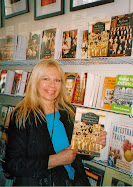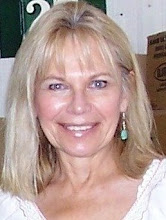Wilno, Poland. For most of my life, that was as closely as I could pinpoint my grandparents’ birthplaces. I didn’t know that Poland did not exist on the map of Europe when they were born in the 1880s-90s, or that the Partitions of 1793-95 had carved up Polish territory to be claimed and governed by the Prussian (German), Austro-Hungarian, and Russian empires. I didn’t know that Wilno was the name of a large province (gubernia) in the Russian Partition, as well as the province’s largest city. I didn’t know that my grandparents actually lived about 65 miles south/southwest of the city in rural villages within Wilno gubernia.
Looking back, I can’t decide whether I’m surprised or not that I knew so little about my grandparents’ birthplaces specifically and about their homeland generally. Growing up in a Polish American household that included my babcia (grandmother) Stefania, I had endless opportunities to ask for details about her early life. But for whatever reason, my babcia’s later years offered no obvious prompts to such conversations—no photos or mementos, no letters from family who had not emigrated, no documents, no stories related without prodding. She died when I was 15 and just on the cusp of a more meaningful curiosity about her past.
My Polish American education
As to Poland in general, it seems that I should have learned a lot academically about this complicated country since I attended a Polish American parochial school for 12 years (St. Mary’s in Worcester). For decades after its founding in 1915, St. Mary’s offered a bilingual curriculum with a strong concentration on all aspects of Polish heritage: language skills, history, the arts, and of course, religion. That emphasis had weakened by the 1950s, when I began elementary school. St. Mary’s offered us baby boomers three years of Polish in reading (I still own a copy of Moja Pierwsza Ksiazeczka) and religion (a bilingual Baltimore Catechism). From fourth grade to high school graduation, Polish was more typically limited to classroom prayers, choir practice, and cultural and religious events. We learned the Polish national anthem, Jeszcze Polska Nie Zginela ("Poland Is Not Yet Lost," first sung in 1795 when the country was partitioned), but we didn’t learn much about Poland’s very recent loss of lands, people, and freedom in World War II and its aftermath.
Where were Polish history and geography? I’m certain they were on the high school curriculum through the 1940s, when St. Mary’s was overseen by Monsignor Boleslaw Bojanowski, a pastor passionate about preserving Polish heritage through education. Certainly Poland’s critical wartime experiences kept the country in high profile in the classroom in that era. Why did Polish history and geography drop from the course of study so soon after? A couple possible reasons, not mutually exclusive, come to mind.
Monsignor Bojanowski, who was born in 1877, retired in 1956 and died eight years later. His waning influence and replacement by Reverend Charles Chwalek mirrored the larger experience of Worcester’s Polonia—the decline of the immigrant generation and the rise of the first generation of Polish Americans, whose lives teetered between ethnic continuity and mainstream assimilation. That generation may have felt more oriented to an American future than a Polish past.
It may be that our first-generation Polish American parents, nuns, and clergy envisioned us learning all about Poland through simple osmosis. After all, many of us grew up in Worcester’s three-deckers with our grandparents and extended family all living under the same roof. It seems that we could have learned a great deal informally from our immigrant elders in the course of daily life. Yet I never asked my babcia the name of her village in Wilno. At St. Mary’s, I learned the Polish national anthem when I was five years old (before the American anthem, if I remember correctly). I never learned the boundaries of the Polish Partitions, or where the Vistula and Niemen rivers flowed, or who was king in 1674. I knew precious little before I got involved in genealogy in 1996, so I was happily surprised to discover that my Polish American home and school life—growing up bilingual and bicultural—had given me a solid base for exploration.
More than map coordinates
Initially, I was thrilled to identify where my grandparents were born, to be able to point to the names of their villages on maps. Before long, though, I wanted to know more than latitude and longitude and administrative divisions. What was life like for them? What did the land look like? the houses? the clothing? What were the area’s resources? its lacks? How did the larger world impact these villages? Why did my grandparents leave?
Learning more about where my grandparents came from is an ongoing challenge. In general, small villages don’t tend to be the subject of detailed historical chronicles. Lengthy works on obscure villages in the Polish kresy (eastern borderlands) are rare, and those translated into English, rarer still. But resources exist in both languages (and in Russian, Belarusian, and Lithuanian as well, though regrettably I don’t read those languages). They range from 19th-century books to 21st-century Web sites, and often include maps, photos, and other illustrations that help bring the past to life. In my next entries here, I will share some information and images to paint a picture of where my grandparents came from: villages affiliated with the Roman Catholic parishes of Szczuczyn, Iszczolna, and Radun in Lida powiat (district) in Wilno gubernia (province) in the Russian Empire. This area fell within the borders of Poland when the nation regained its independence in 1918, but has been within western Belarus since 1945. Such are the vicissitudes of Polish history and geography, subjects that add depth to genealogy.
Subscribe to:
Post Comments (Atom)










Very nice blog. I came upon it looking into family history as well. My Great Grandparents were Poles from Wilno as well. The village on my Great Grandmother's manifest says "Wiculi", never have been able to locate it. Some documents list them as Russian citizens, but ethnic Poles. I've hit a dead end, neither Belarus' or Lithuania's archives can find this woman. But it has been a lot of fun looking into the past.
ReplyDeleteExcellent article! I have the same interest in discovering my Polish roots and heritage.
ReplyDeleteBest Regards,
Al
About "Wiculi": This intrigued me so I did a variety of searches for this village name. The closest I came up with is "Wiciule," in "Parish Affiliations of Villages in the Former Archdiocese of Wilno," a database on the Language and Lineage Press website. (I just added the link to my "Relevant Web Sites" list here.) My guess is that this village is near Druskininkai, Lithuania, and may now be known as Vieciunai ... but that's just a wild guess. Good luck with your research, and keep me posted if you find your village!
ReplyDeleteAl, dziekuje bardzo! I appreciate your feedback.
ReplyDelete